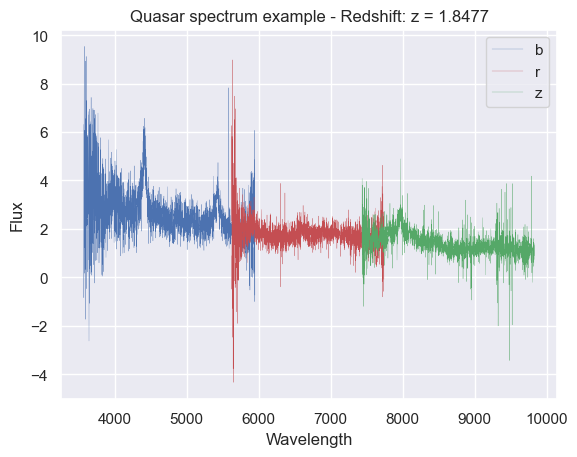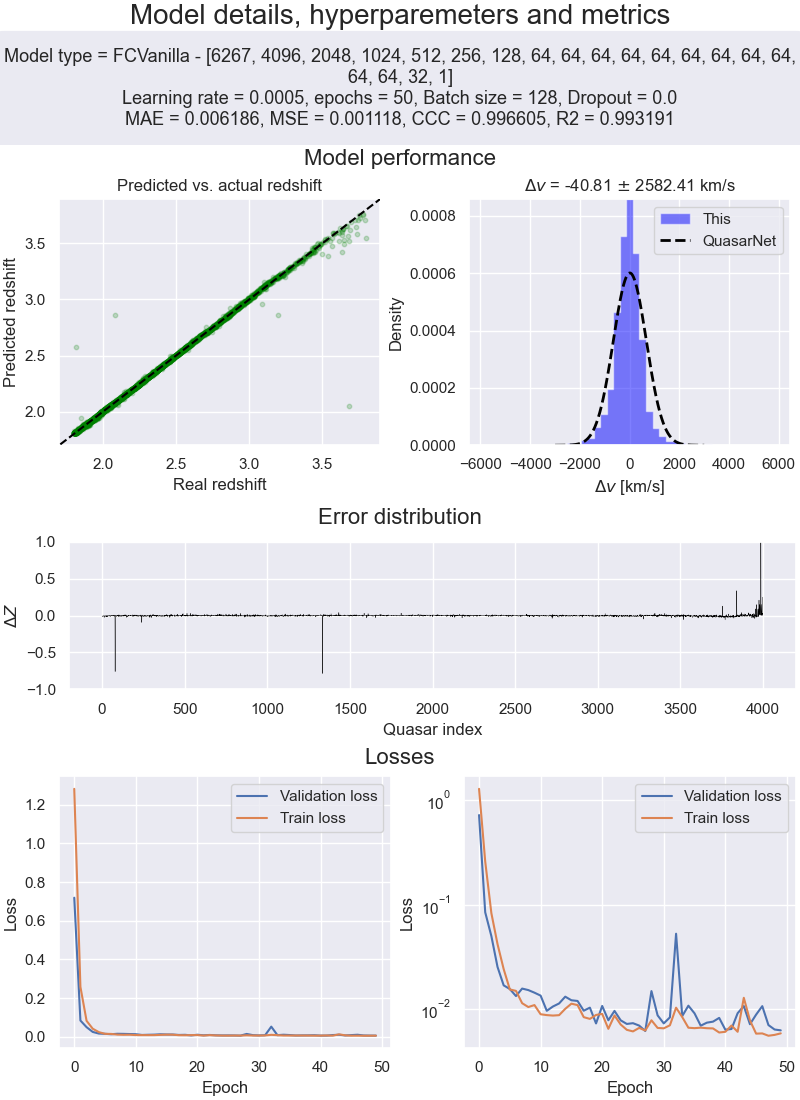By: Gabriel Missael Barco
Professor: Dra. Alma Xochitl González Morales
The objective of this project is, given the light from a quasar, to predict its redshift. The redshift measures the distance to the quasar, an essential parameter in cosmology.
The data is taken from a simulation provided by the professor and it's composed of 40,000 quasars. An example of the data is shown below:
To assess this problem, we tried two different approaches:
- Fully connected neural network.
- Convolutional neural network.
For each of those approaches, we tried different architectures and hyperparameters. We obtained the best results with (surprisingly) a fully connected neural network. The summary of the best result is shown below:
To compare this result, we compare this best run with the results obtained by Niculas Busca, Christophe Ballan, 2018, QuasarNET: Human-level spectral classification and redshifting with Deep Neural Networks . Notably, we compare the distribution of the implied velocity difference between the predicted and the real redshift. In summary, this model is five times worse than QuasarNET in predicting the redshift.
QuasarNET obtains a
We tracked all of the experiments with Weights and Biases. This tool is handy for keeping track of the experiments. The link to the project is here. You can see the experiments' results, the code, and the hyperparameters used.
To run the code, you need to have Python 3.9 and conda installed. Then, you need to create a new environment with the dependencies:
conda create -n quasar python=3.8
conda activate quasar
conda install --file requirements.txtThen, you can start running the main notebook, and that's it! 🎉. There are two notebooks, one with all the project details, report.ipynb and code explained, and the other one with the code only, proyecto_final.ipynb. Part of the code used in the proyecto_final.ipynb notebook is in the DeepRedshift folder.
Finally, if you prefer to read the report, refer to the final_report.pdf file. Thanks for reading! 🙏

